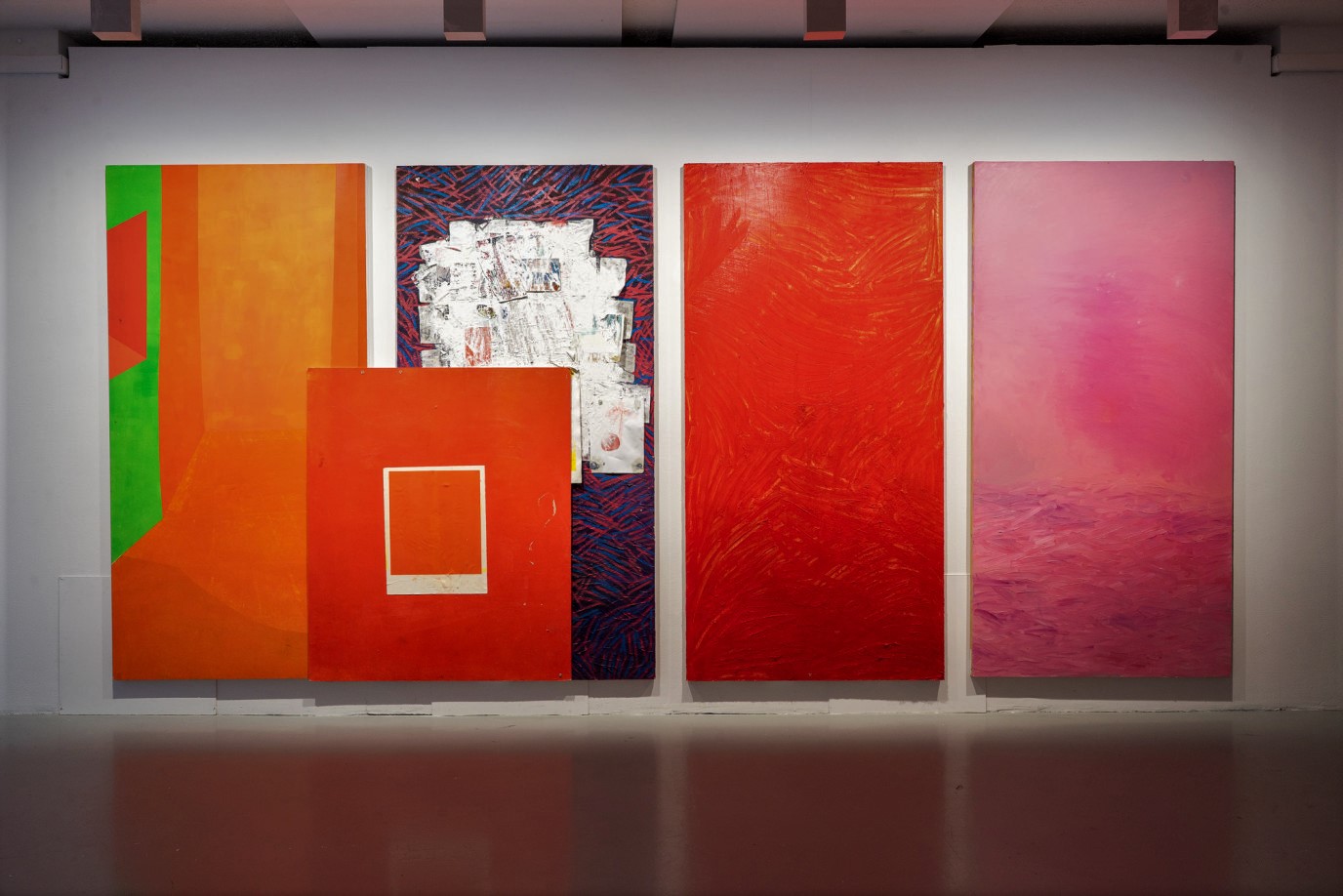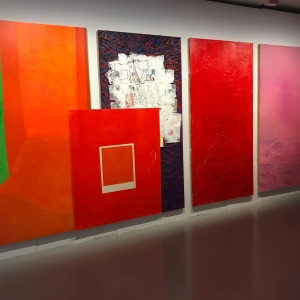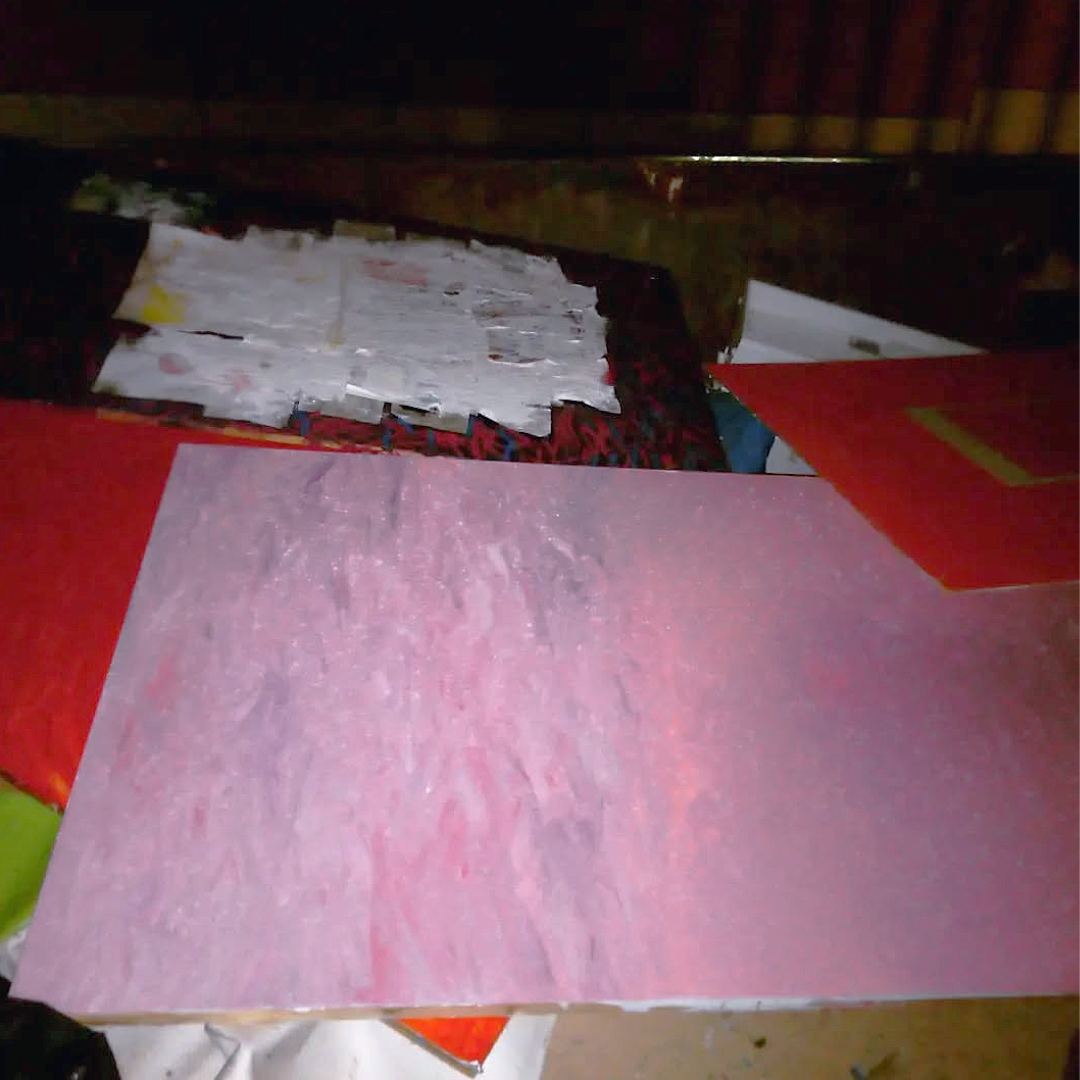I think my paintings look great, but I stopped because it didn't fit into a general discourse
2020
210x400cm
acrylic, oil, paper, ink, and wooden panels.
I watched the television and listened to music. For three years, I did nothing but paint, draw, sleep, eat, and read a couple of books. I performed countless visual experiments according to the schedule I had devised – which was to paint as much as I could every day. My goal was to represent reality as painted abstractions. The system of rules that I had created required a great deal of self-discipline, and its purpose was to express something that could not be communicated in speech or writing. The painting process became an institution. The essential activity of my institution was to make paintings and to repeat the steps that constituted the system. The point of the repetitive process was to find new forms of interaction between the painting and myself.
Guided by my vision, I thought that creativity in painting can be measured if the artist, through experimentation, can create something new – to enrich the field of painting by inventing styles that would be completely original. I believed that these would constitute values that the art world and the audience would particularly appreciate. I included all conventional methods to my painting process and paid close attention to form, spatiality, brushstrokes, and colors. I did all this because I thought that the only reliable proof of creativity was to rearrange the structures of traditional painting. Moreover, if I could reach even further heights by complementing my new style with a quality of expression that would surpass the style of those who had depicted the same motifs before me, this would be undeniable proof of my understanding of my medium. I would also have reinvigorated the potential of the traditional painting mediums. When I look back at all this, I find my thoughts both therapeutic and challenging.
Trying to find a unique style is much like trying to give up hard drugs; you need to process your failures and leave all that does not work behind. Then there is resilience and planning. The emptiness that I felt after quitting drugs was replaced by an idealistic approach to painting. Finding a new activity made it much easier for me to live without intoxicants. I was also able to pull myself away from the social network that was defined by drug use with no mental struggle whatsoever.
Before I was accepted into the Academy of Fine Arts, I was sincerely sympathetic to the modernist view of art. The works presented in this exhibition were made in the autumn term of the first year of studies during the compulsory orientation course. At the time, I still used to paint according to the same visual criteria, although I was no longer as strong in my resolve. The goal of the orientation course was to provide the students with information about the Academy of Fine Arts as an institution, its curriculum, different alternatives, staff, administrative procedures, students, and facilities. It served as an introduction to the resources and limitations of the Academy.
The paintings are set up by the date of completion. The oldest work is on the left and the most recent one is on the right. The orange painting with a square on white paper is an exception to the chronological order. It was my first successful experiment, and after giving it some thought, I think it represents a seat in the Helsinki subway train. The leftmost work is a spatial illusion produced by shapes and colors. The three other works are still unfinished.


